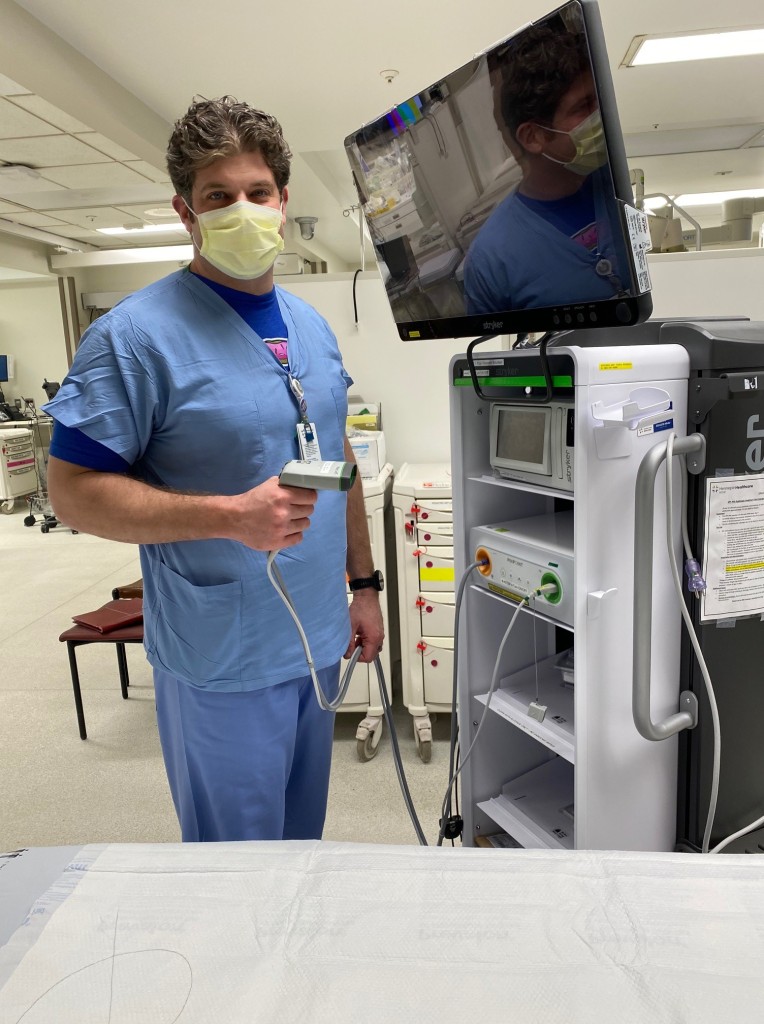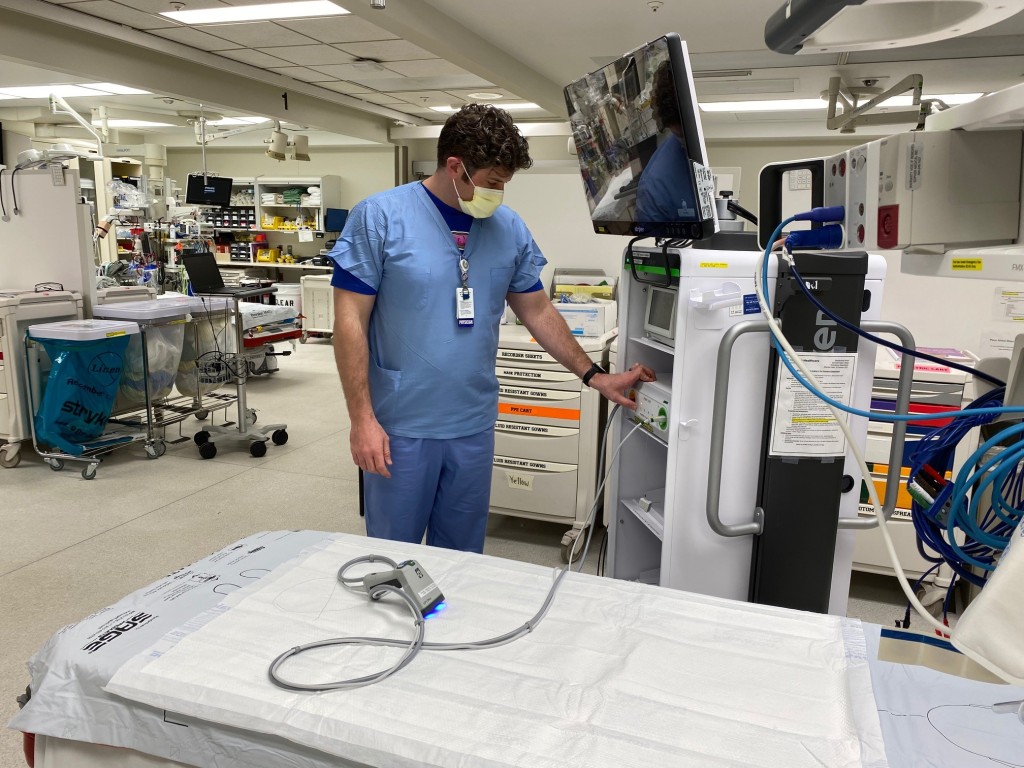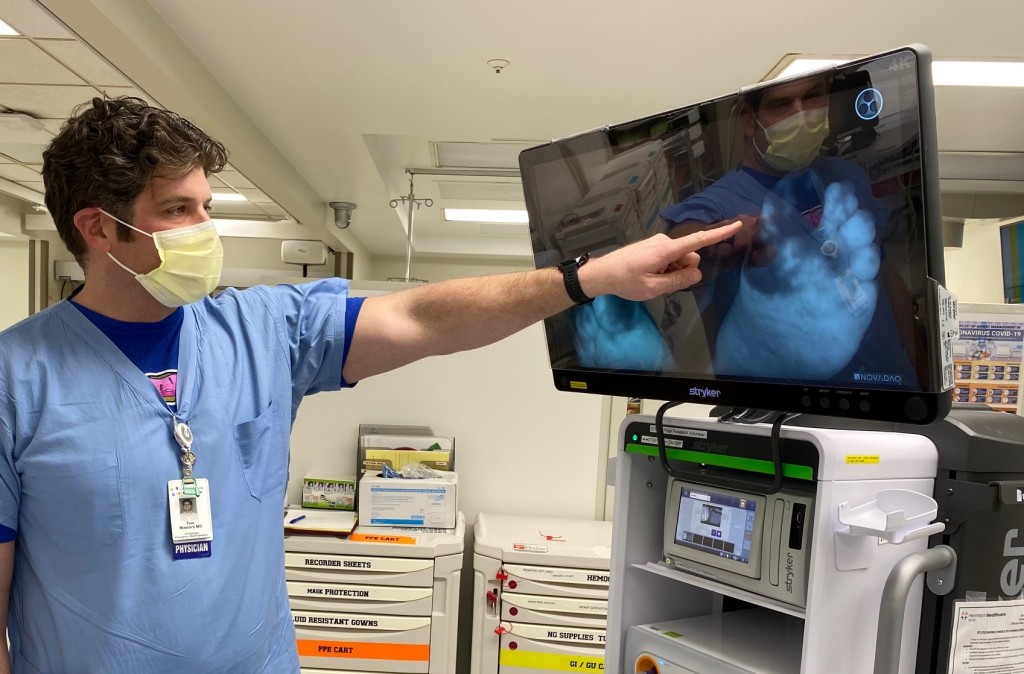Frostbite patients may benefit from innovative fluorescence imaging technology

Dr. Tom Masters demonstrates Stryker’s SPY technology.
Major advancement allows physicians to visualize blood flow with handheld device at bedside
Physicians at Hennepin Healthcare have a new tool to help make life and limb-saving decisions in patients being evaluated for frostbite injury and other tissue perfusion concerns. Stryker’s SPY-PHI is a hand-held device that was made to be used in a surgical setting to visualize the quality of blood flow in vessels and micro vessels that provide oxygen to organs. HCMC is the first hospital in the state to implement this advanced technology in an acute setting.
“We’ve already realized SPY’s benefits when evaluating exposure patients for frostbite injury,” explains HCMC emergency physician Dr. Thomas Masters. “It may help physicians determine when the use of clot-busting medications is indicated, as well as when it’s not.”
SPY-PHI uses a near-infrared low powered laser light source to stimulate a fluorescent imaging agent that has been injected into the blood stream. The fluorescent agent binds to the proteins in blood and circulates through the body. When stimulated by near infrared light, the protein-bound agent emits a fluorescence signal which enables visualization of blood flowing through vessels and into tissue. The fluorescence is captured by a special camera, is processed and is displayed on a video monitor for the physician to review. Since the agent is bound to blood, where blood goes, it goes. If there is no fluorescence, it can mean that there is compromised blood flow.

The innovative device is currently in use in HCMC’s stabilization room.
“We hope that eventually it may have applications for crush injuries, necrotizing fasciitis, and other types of wounds,” said Dr. Masters.
Unlike traditional bone scans, which can be time-consuming to perform in an emergent situation, SPY technology does not involve ionizing radiation and utilizes a fluorescence imaging agent with a short half-life thus allowing surgeons to repeat perfusion assessment as needed.
HCMC is a nationally recognized Level I Adult Trauma Center and Level 1 Pediatric Trauma Center with the largest emergency department in Minnesota. It is operated by Hennepin Healthcare System, Inc., a subsidiary corporation of Hennepin County. The comprehensive academic medical center and public teaching hospital and clinic system includes a 484-bed acute care hospital, primary care and specialty clinics located in Minneapolis and surrounding suburban communities, as well as home care and hospice services.


